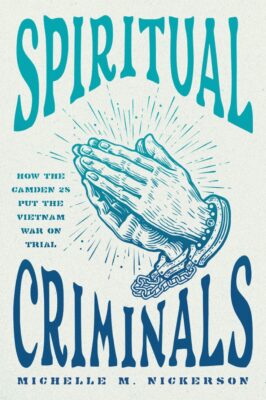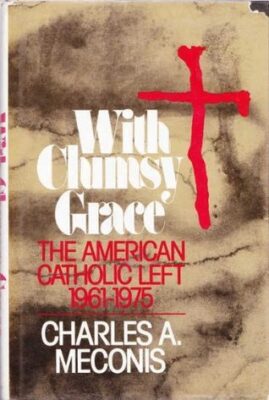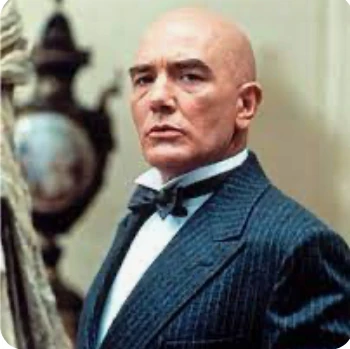Editor's Note
Post #7 in an ongoing series related to Michelle Nickerson’s Spiritual Criminals. Today’s entry is the first of two on the topic of feminism and the Camden 28. The next will appear here on Friday, 11/29.
Today’s reflection is a necessary follow up to my last post on Catholic masculinity. Michelle Nickerson covers how feminism affected the trajectory of the Camden 28 draft board action. In fact, there is no way to fully understand the lead up, action, trial, and fallout of the Camden 28 story without a deeper consideration of the women involved, feminism, and related gender trouble. Feminism is more integral to the story than is advertised by even Nickerson herself—who, to be fair, does not at all minimize the topic. Gender trouble hovers around, and over, Spiritual Criminals.

Michelle Nickerson, *Spiritual Criminals: How the Camden 28 Put the Vietnam War on Trial* (University of Chicago Press, 2024)
If you scan the index of Spiritual Criminals, the term ‘feminism’ itself is only officially catalogued on four pages. Of course, index appearances are no way to judge the importance of any topic to a text. Many works may show only a few raw page references to key topics. Placement and emphasis matter as much as quantity. Nickerson addresses feminism in the Introduction. Here’s how she opens on the topic:
The crucible of dissent in those decades included another important element that animated Catholic Resistance, especially the younger, college-age generation—feminism. A deceiving band-of-brothers swagger characterized the public image of the movement, as represented most often by the charismatic Berrigan brothers. This bravado masked the significant participation and impact of women. These were New Left women who joined enthusiastically in the risk-taking, partying, and overall insubordination against the powers that be.
Nickerson contextualizes Catholic feminism in relation to a number of non-Catholic developments that set the atmosphere for the Camden 28 draft board action. She links the Camden 28 women, in a general way, to the ongoing consciousness raising that began with Betty Friedan’s The Feminine Mystique and continued with “the radical Redstockings of New York to Black womanists who challenged the white dominance of the women’s liberation movement” (p. 9). We could no doubt roll in themes from 1960s counterculture, as well as those who felt the sexual revolution of the period would empower women to take charge of their entire selves. Indeed, Nickerson does reference the sexual interplay between Camden 28 action members—though not in any voyeuristic fashion.
In chapter two, “Civil Disobedience,” Nickerson returns to explicit citations of feminism. She notes that “attacks on hierarchical structures” in Catholicism by males “made women attentive to their own secondary status…in their groups, especially in relation to the priests and other devout laymen, who tended to be older than the women” (p. 49). One particular draft board action in the late 1960s, on a Manhattan office, exemplified resistance by Catholic women to both the war and the church’s systemic sexism. (Note: This action stoked my curiosity as much as the Camden 28 raid.)

Book cover for Charles Meconis’ *With Clumsy Grace*
The group that conducted the raid, “Women Against Daddy Warbucks,” helped, in Nickerson’s words, to formally introduce feminism to the Catholic Left—meaning in terms of a public presence of activism and feminism. No precise date is given in the text for the Daddy Warbucks action, but Nickerson relays details as gathered by Charles A. Meconis and published in his 1979 book, With Clumsy Grace: The American Catholic Left, 1961-1975. The name “Daddy Warbucks” comes, of course, from the central character in the comic, musical, and musical film Annie—or, more precisely, the long-running comic strip Little Orphan Annie. Warbucks was a bald male billionaire who expressed the conservative political leanings of comic strip’s creator.[1] The Warbucks character, Nickerson writes, “offered an apt symbol of the patriarchy undergirding the military-industrial complex” (p. 49).
In the Manhattan action, the Warbucks women destroyed files. They also symbolically removed the “1” and “A” keys from office typewriters. In a few days, Nickerson relays, on the Fourth of July of the same year at a Rockefeller Plaza rally, the same group also “threw torn pieces of the [Manhattan draft board office] records among their hundreds of supporters” (p. 49). Apparently the FBI attempted to arrest Warbucks activists there. According to a 2018 New York Times article that surveyed many of these draft board actions, Women Against Daddy Warbucks went on to conduct seven more draft board raids in New York City. [2]

This is a picture of Albert Finney as Daddy Warbucks in the 1982 film, Annie.
A Daddy Warbucks participant, Margaret Geddes, relayed the following about her time as a member of the group: “Some of us thought there must be a way to make a statement as women about women’s opposition to the war that was more than the classic support role” (p. 49).[3] The ‘Women Against Daddy Warbucks’ group allowed activist women to break through the activist barrier of manliness. They could not be seen as members of a fragile second sex given the risks assumed and responsibilities—they were spokespeople in addition to having “cased buildings” and broken into draft board offices. They would not be subordinate to the men of the movement. They fought the active patriarchy in the Catholic Left along with the draft.
Next week’s installment will a continuation of this meditation on Catholic feminism and the Camden 28.
—————————————————–
Notes
[1] “Harold Gray,” Encyclopedia Britannica, May 9, 2024. Available at this link. Accessed 11/01/2024. ] The Daddy Warbucks character was created by Harold Gray (1894-1968) and first appeared in a 1927 strip published in The New York Daily News.
[2] Maggie Astor, “Their Protest Helped End the Draft. 50 Years Later, It’s Still Controversial,” The New York Times, May 19, 2018. Available at this link. Accessed 11/01/2024.
[3] The quote comes from R.G. Riegle’s 2013 book, Crossing the Line: Nonviolent Resisters Speak Out for Peace (Eugene, OR: Wipf & Stock Publishers). A reference found on 218n39 of Nickerson.

0